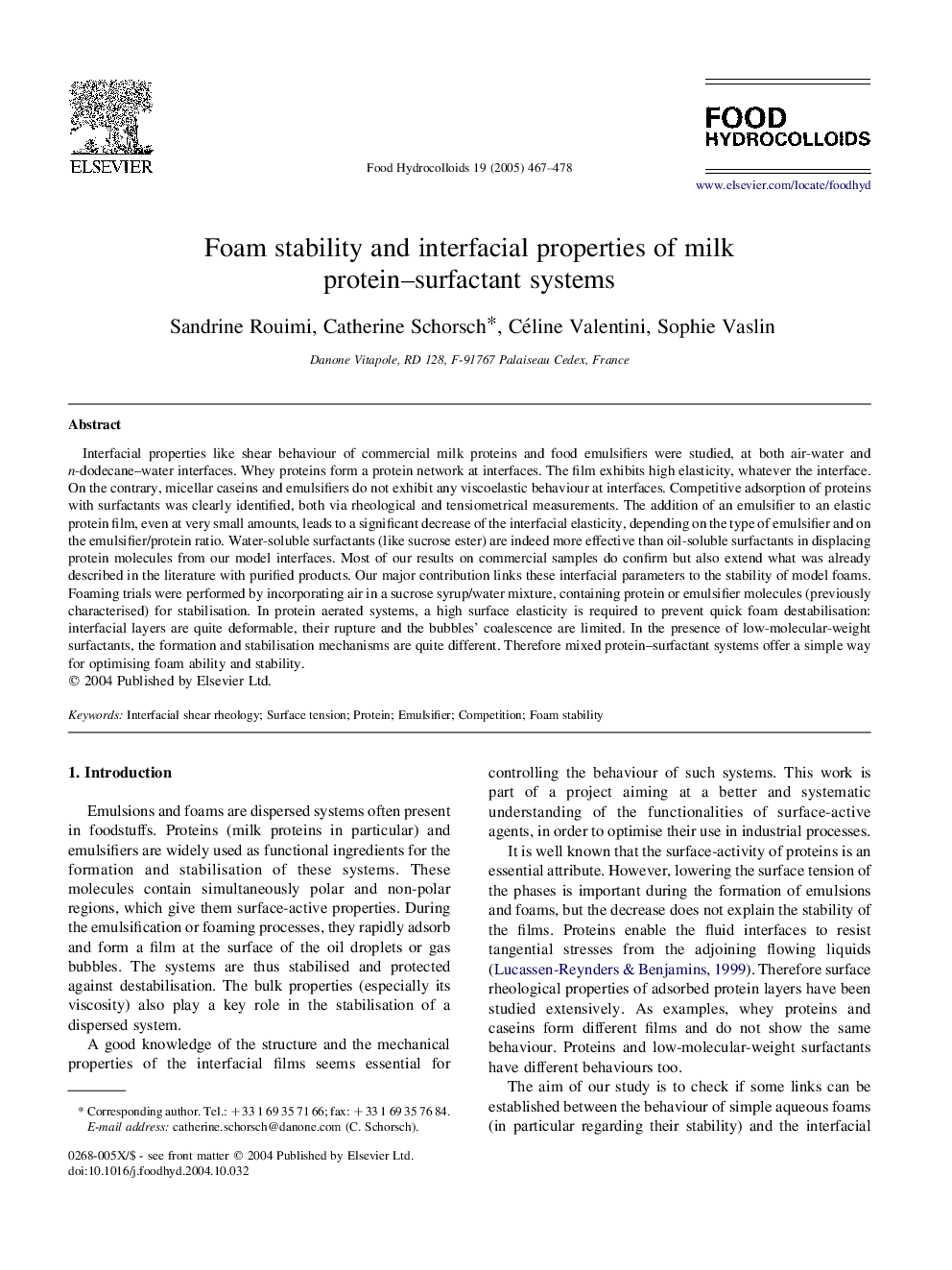| Article ID | Journal | Published Year | Pages | File Type |
|---|---|---|---|---|
| 10376005 | Food Hydrocolloids | 2005 | 12 Pages |
Abstract
Interfacial properties like shear behaviour of commercial milk proteins and food emulsifiers were studied, at both air-water and n-dodecane-water interfaces. Whey proteins form a protein network at interfaces. The film exhibits high elasticity, whatever the interface. On the contrary, micellar caseins and emulsifiers do not exhibit any viscoelastic behaviour at interfaces. Competitive adsorption of proteins with surfactants was clearly identified, both via rheological and tensiometrical measurements. The addition of an emulsifier to an elastic protein film, even at very small amounts, leads to a significant decrease of the interfacial elasticity, depending on the type of emulsifier and on the emulsifier/protein ratio. Water-soluble surfactants (like sucrose ester) are indeed more effective than oil-soluble surfactants in displacing protein molecules from our model interfaces. Most of our results on commercial samples do confirm but also extend what was already described in the literature with purified products. Our major contribution links these interfacial parameters to the stability of model foams. Foaming trials were performed by incorporating air in a sucrose syrup/water mixture, containing protein or emulsifier molecules (previously characterised) for stabilisation. In protein aerated systems, a high surface elasticity is required to prevent quick foam destabilisation: interfacial layers are quite deformable, their rupture and the bubbles' coalescence are limited. In the presence of low-molecular-weight surfactants, the formation and stabilisation mechanisms are quite different. Therefore mixed protein-surfactant systems offer a simple way for optimising foam ability and stability.
Related Topics
Physical Sciences and Engineering
Chemical Engineering
Colloid and Surface Chemistry
Authors
Sandrine Rouimi, Catherine Schorsch, Céline Valentini, Sophie Vaslin,
